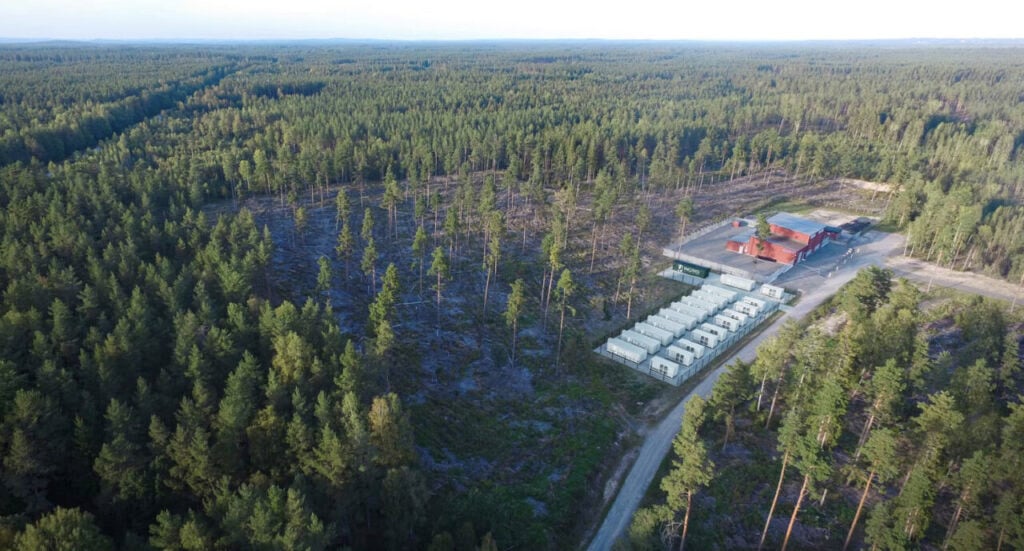
In this installment of our Year in Review series, we hear from developer and independent power producers (IPPs) Econergy and Ingrid Capacity, both active in the European market.
Battery energy storage system (BESS) specialist Ingrid Capacity has the largest operational portfolio in Sweden and the Nordics, a collection of projects totalling 211MW which came online towards the end of last year.
Enjoy 12 months of exclusive analysis
- Regular insight and analysis of the industry’s biggest developments
- In-depth interviews with the industry’s leading figures
- Annual digital subscription to the PV Tech Power journal
- Discounts on Solar Media’s portfolio of events, in-person and virtual
Israel-headquartered Econergy meanwhile is active primarily in solar PV but has expanded into BESS recently, telling Energy-Storage.news in September that it would be the first to build a large-scale BESS in Poland and is considering adding BESS to its large Romania pipeline too.
In this piece, Ingrid’s chief strategy officer Nicklas Bäcker and Econergy’s head of energy storage Joshua Murphy look back on 2024 and ahead to 2025.
Energy-Storage.news: What did 2024 mean for the energy storage industry from your company’s perspective and the bigger picture?
Nicklas Bäcker: The industry experienced a significant rollout of projects across many markets, and in the Nordics, BESS has during the year proven its vital role in the energy system as projects come online. Ingrid Capacity commissioned the Nordics’ largest project portfolio and announced the construction of the second-largest energy storage portfolio in the Nordics.
Joshua Murphy: For Econergy, 2024 was a landmark year for energy storage, marked by significant achievements in project execution, financing, and international expansion. Key milestones included advancing our storage project pipeline, commencing commercial operations of the Swangate 100MWh project in the UK, and starting construction on 280MWh of additional capacity across the country.
On a global scale, 2024 highlighted the critical role of battery storage in integrating intermittent renewable energy sources like solar and wind. This reinforced energy storage as a cornerstone of grid reliability, flexibility, and the broader energy transition.
What do you think 2025 will hold, in terms of opportunities and challenges?
Bäcker: Firstly, the rollout will continue in several of our active markets where Ingrid Capacity will continue to drive the Nordic expansion, primarily in Sweden and Finland. Secondly our expansion in Germany and Poland continues with projects reaching the market during the year.
The main challenges will revolve around addressing grid constraints effectively – both during project development and by leveraging our existing assets to eliminate grid bottlenecks at critical grid points.
Murphy: 2025 promises exciting advancements in battery technology, including longer lifespans, enhanced performance, and further cost reductions, which will drive new deployment opportunities. Regulatory support and evolving market structures will continue to bolster investor confidence, particularly in mature markets like the UK and emerging ones such as Germany, Poland, and Romania.
However, challenges persist. Bottlenecks in grid connections across our active markets remain a significant hurdle. Addressing these requires substantial investments in manpower and resources, alongside a collaborative approach with policymakers and infrastructure developers.
The last year has seen incredible growth in energy storage deployments worldwide. What are some lesser-known factors to consider when looking at mature and emerging markets?
Bäcker: In the Nordics we’ve seen batteries outcompete traditional balancing assets such as hydropower on price. This has previously been seen as a barrier but is now broken. This is implying BESS now being the most cost-effective way to balance production within the hour.
Murphy: In mature markets, one often overlooked challenge is optimising revenue streams. As competition intensifies and markets approach saturation, projects must stack multiple revenue streams—such as ancillary services, arbitrage, and capacity market revenues—to remain financially viable.
In emerging markets, the primary barriers are investor confidence and access to project financing. Despite these challenges, these regions offer unique opportunities for early movers to shape market frameworks, secure high returns, and benefit from lower competition.
Are there any major market trends that readers should watch for in 2025?
Bäcker: An interesting trend to watch in the coming years is the growth of financial energy products. Capacity PPAs and similar products are becoming increasingly important from a bankability perspective.
Murphy: Cost reductions in lithium prices are expected to be a key market development, further driving the economic feasibility of energy storage systems.
From a financing perspective, energy storage is maturing as an asset class, drawing interest from institutional investors. Innovative financing models, such as revenue guarantees and storage-as-a-service, are gaining momentum.
On the technology side, the integration of AI and advanced analytics to optimise storage performance, enhance monitoring, and maximise revenue generation is emerging as a game-changer. These innovations are set to redefine the operational efficiency and profitability of storage projects.
What should the industry’s priorities be in 2025 and beyond?
Bäcker: Same as always, solve grid constraints to accelerate electrification and the green transition!
Murphy: Scaling deployment to meet energy transition demands must be the industry’s top priority. This entails tackling regulatory and permitting challenges, upgrading grid infrastructure, and establishing fair and transparent market mechanisms to fully value storage services.
Collaboration across the value chain—including policymakers, developers, and technology providers—will be crucial to achieving these goals. Additionally, fostering innovation in technology and business models will ensure that energy storage continues to evolve as a critical enabler of the global energy transition.

